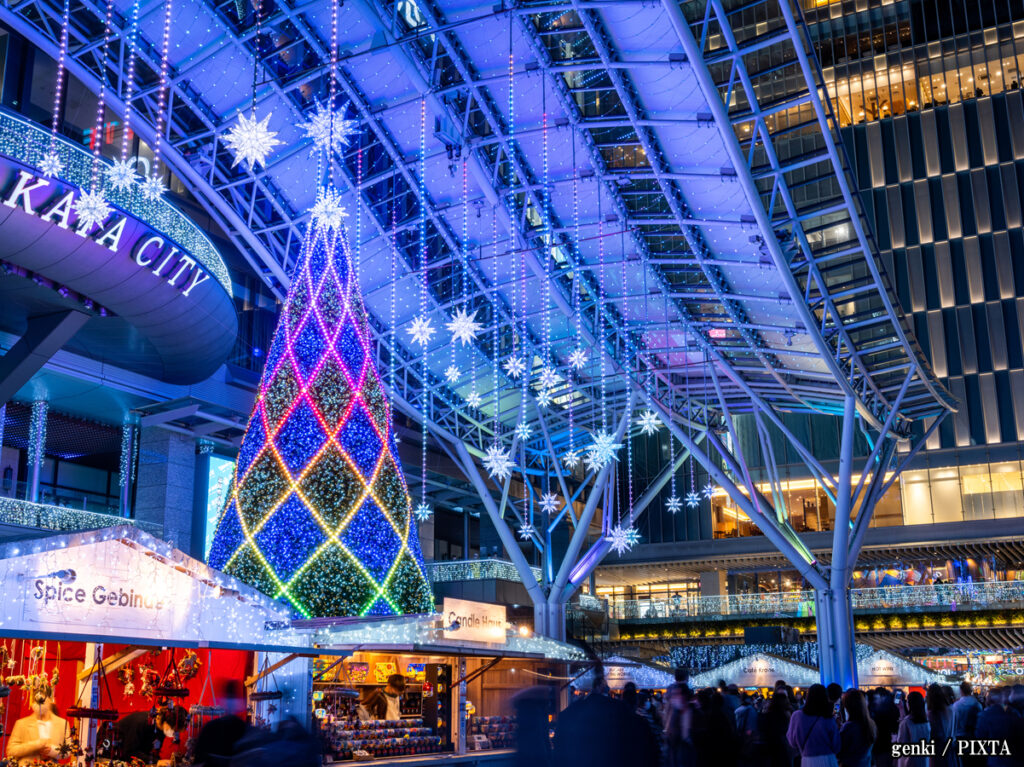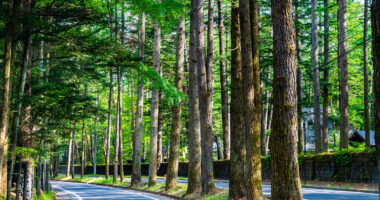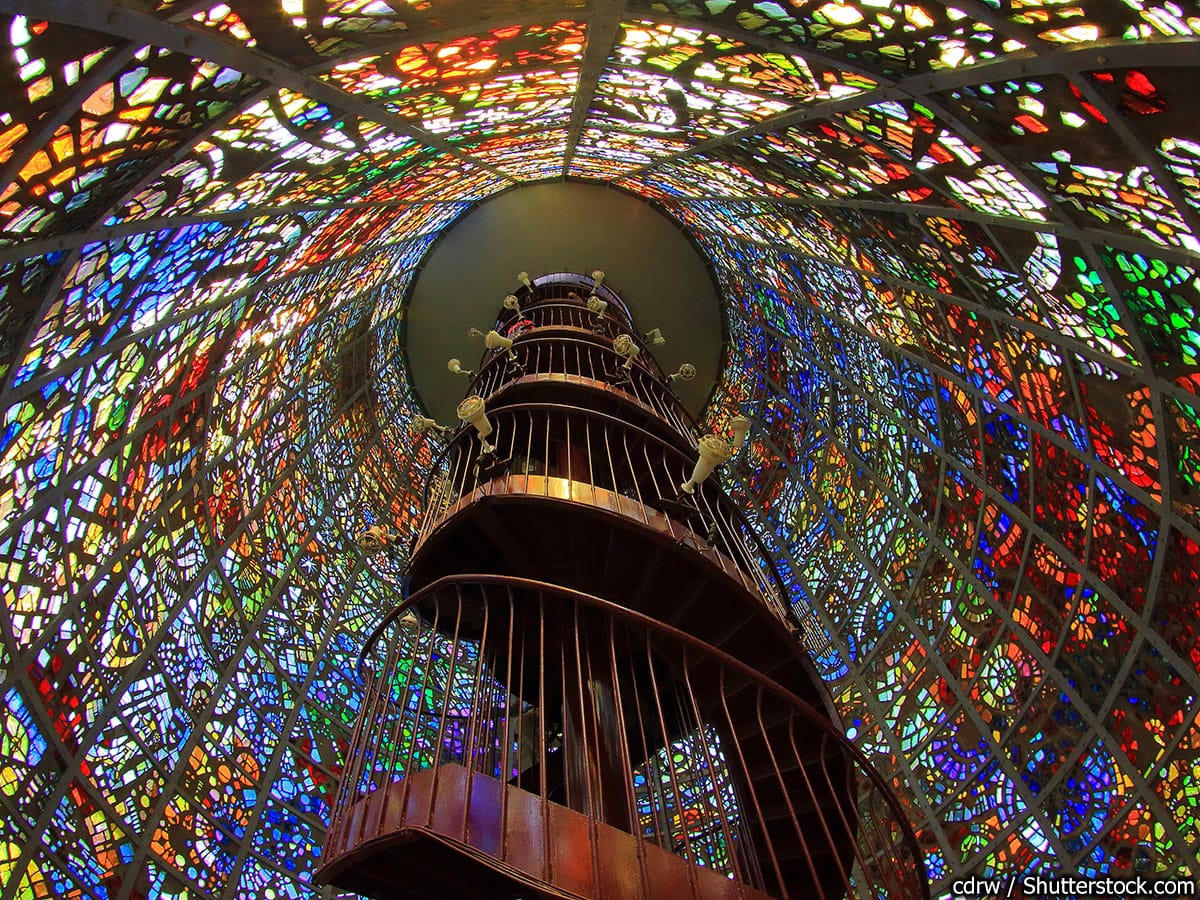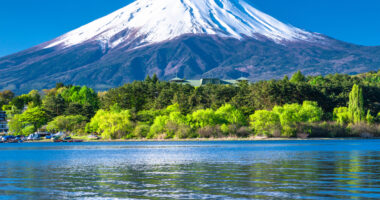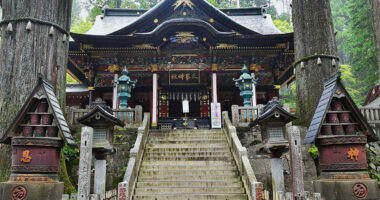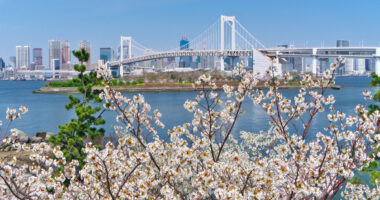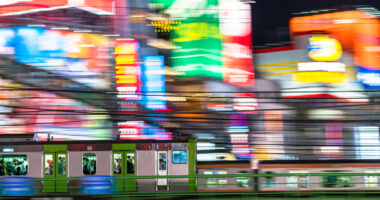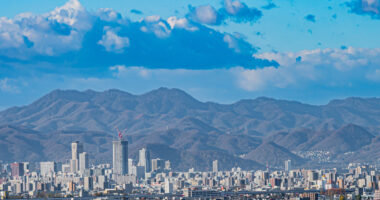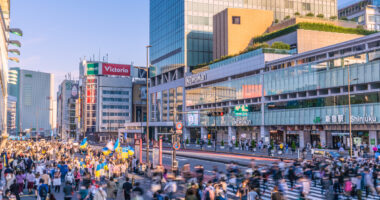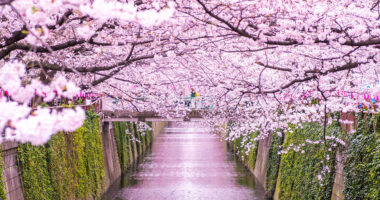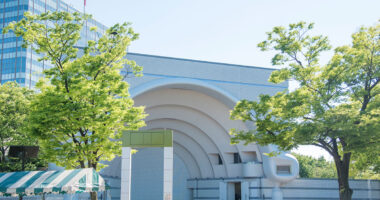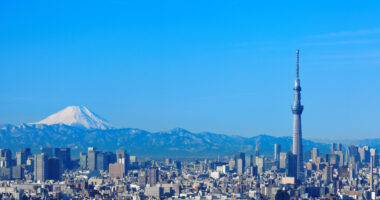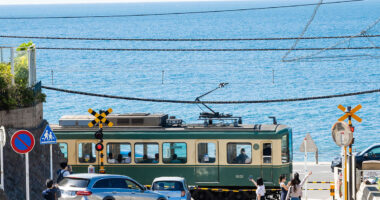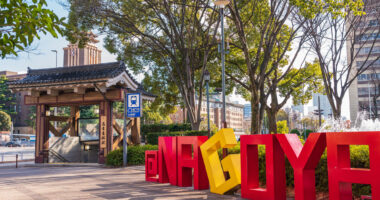Some journeys are more than just trips; they’re invitations to experience a region’s soul, and that’s exactly what it feels like to glide through Kyushu on the Shinkansen — Japan’s famous bullet train. An amazing thing about Shinkansen is that with each station, the landscape shifts. If you’re a foreign traveler craving to explore Kyushu by train, this rail adventure is your golden ticket to a wholesome experience.
So, fasten your seatbelt… Well, not really. Shinkansen seats don’t need them! Never mind. Let’s set off on a ride filled with stunning views, unique destinations, and unforgettable experiences.
- A quick overview of the Kyushu Shinkansen
- What is the link between Sanyo Shinkansen and Kyushu Shinkansen?
- Kyushu Shinkansen train categories
- Major stops and what makes them special
- Suggested 2-4 day itineraries
- Your guide to the JR Kyushu Pass
- Useful tips for riding the Shinkansen in Kyushu
- Why train travel wins in Kyushu
- Final thoughts
A quick overview of the Kyushu Shinkansen
Before we talk about the Kyushu Shinkansen, let’s take a moment to understand Kyushu as a whole. Known for its rich variety of experiences, Kyushu is one of Japan’s main islands and a favorite among local travelers. People love it because it offers a bit of everything — beautiful nature, hot springs, local food, and cultural sites. It’s also less crowded than big cities like Tokyo, which makes it a nice place to explore at a slower pace.
Time for some facts! Kyushu is made up of eight prefectures: Fukuoka, Saga, Nagasaki, Kumamoto, Ōita, Miyazaki, Kagoshima, and Okinawa. Now, what are prefectures? Prefecture (todōfuken) is an administrative division or local district that is similar to a state in the United States or a province in Canada. Within these eight prefectures, there are a total of 67 cities. Fukuoka prefecture alone has 29 cities.
Here’s a map of Japan to help you understand where Kyushu is (in pink), as well as its prefectures (numbered 40 to 46):
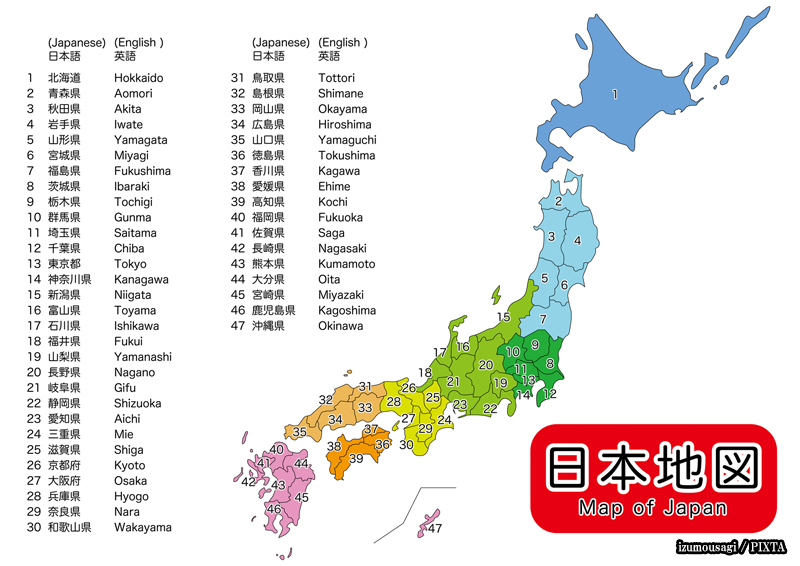
Image for illustrative purposes
Note: Okinawa Prefecture (47 in the map above), though separated from Kyushu Island by more than 500 miles of ocean, is technically part of the Kyushu region.
Now that you have an image of Kyushu, let’s explore the Kyushu Shinkansen.
The Kyushu Shinkansen is one of Japan’s most impressive high-speed rail lines. Opened in stages from 2004 and completed in 2011, it connects the north and south of Kyushu with speed, comfort, and efficiency.
This main line has two routes:
- Kagoshima Route: It runs from Hakata Station in Fukuoka to Kagoshima-Chūō Station in southern Kyushu.
- Nagasaki Route: It is a new section (opened in 2022) of the Kyushu Shinkansen that connects Fukuoka (Hakata Station) to Nagasaki via Takeo-Onsen, reducing the travel time.
What makes the Kyushu Shinkansen stand out is not just the trains’ impressive speed, which is up to 260 km/h (162 mph), but the scenery you’ll enjoy along the way. Imagine rice fields stretching to the horizon, distant mountain ranges, and even glimpses of the sea as you zip through the island. It’s as much a sightseeing experience as it is a means of transport.
What is the link between Sanyo Shinkansen and Kyushu Shinkansen?
Simply put, the Kyushu Shinkansen is part of Japan’s larger high-speed rail network and connects directly to the Sanyo Shinkansen, operated by JR West, which links major cities like Tokyo, Osaka, and Hiroshima to Fukuoka on the island of Kyushu. Thanks to this connection, traveling from Tokyo to Fukuoka by Shinkansen is easy and seamless. The journey takes about five to six hours, depending on the train and transfer time.
Thus, most trains along the Kyushu Shinkansen continue directly from the Sanyo Shinkansen. Despite the fact that the lines are connected, the Kyushu Shinkansen is operated by the Kyushu Railway Company, commonly known as JR Kyushu.
Kyushu Shinkansen train categories
The Kyushu Shinkansen has three main train categories, each varying in speed and number of stops:
Mizuho
Mizuho is the fastest train on the Kyushu Shinkansen, with the fewest stops. It mainly runs between Hakata (Fukuoka) and Kagoshima-Chūō, and continues on the Sanyo Shinkansen to Shin-Osaka (major interchange railway station in Osaka). This makes it perfect for travelers going long distances quickly.
- Travel time: About 3 hours and 45 minutes from Shin-Osaka to Kagoshima-Chūō
- Service: 5 round trips per day
- Japan Rail Pass is not valid on Mizuho, as it’s considered a premium train
Sakura
Sakura is a semi-fast train that stops at more stations than Mizuho but is still very efficient and comfortable. It also runs between Hakata and Kagoshima-Chūō, and many trains continue to Shin-Osaka. It’s a good choice for both tourists and business travelers.
- Travel time: About 4 hours and 10 minutes from Shin-Osaka to Kagoshima-Chūō
- Service: About one train every hour throughout the day
- Japan Rail Pass is valid on Sakura
Tsubame
Tsubame is the local Shinkansen service on the Kyushu line. It stops at all stations, which makes it ideal for regional travel and short-distance trips between smaller cities.
- Service: 1 to 2 trains per hour
- Japan Rail Pass is valid on Tsubame
Related article:
What’s the Fastest Train in Japan? A Look at Shinkansen Speeds and Routes
Major stops and what makes them special
Now that you have an overview of the route, let’s zoom in on the major stations you won’t want to miss. These are must-visit Kyushu destinations accessible by train, each offering something unique.
Kagoshima route
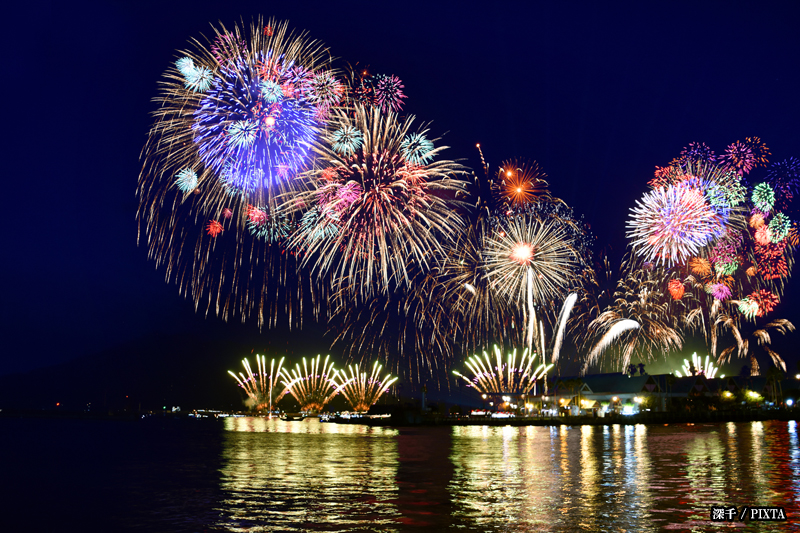
Photo for illustrative purposes
Hakata (Fukuoka)
Your Kyushu Shinkansen adventure usually begins in Hakata, Fukuoka’s central station. Since Fukuoka is known as Japan’s gateway to Asia, thanks to its port history, it has a vibrant urban atmosphere.
Here, you can explore Canal City, a multi-story shopping and entertainment complex; stroll along the Naka River; or slurp your way through famous Hakata ramen. Don’t miss the bustling yatai food stalls, where locals and travelers gather for late-night noodles, skewers, and laughter.
Kumamoto
Next, the Shinkansen carries you to Kumamoto, a city famous for its samurai heritage and natural beauty. Here, the star attraction is Kumamoto Castle, one of Japan’s most impressive, with its black-and-white towers and massive stone walls.
Nearby, you’ll find the tranquil Suizenji Garden, a traditional Japanese landscape garden featuring a miniature Mount Fuji and graceful walking paths. Kumamoto is also the gateway to Mount Aso, one of the world’s largest active volcanoes, if you have time for a side trip.
Kagoshima-Chūō
At the southern end of the line is Kagoshima-Chūō, where you’ll feel the pace of life slow down. Kagoshima faces the Sakurajima volcano, which puffs away calmly in the background. You can take a short ferry ride to Sakurajima, soak in seaside hot springs, and enjoy local dishes like kurobuta pork. Kagoshima is sometimes called the “Naples of the East” because of its southern vibe and volcano views.
Nagasaki route
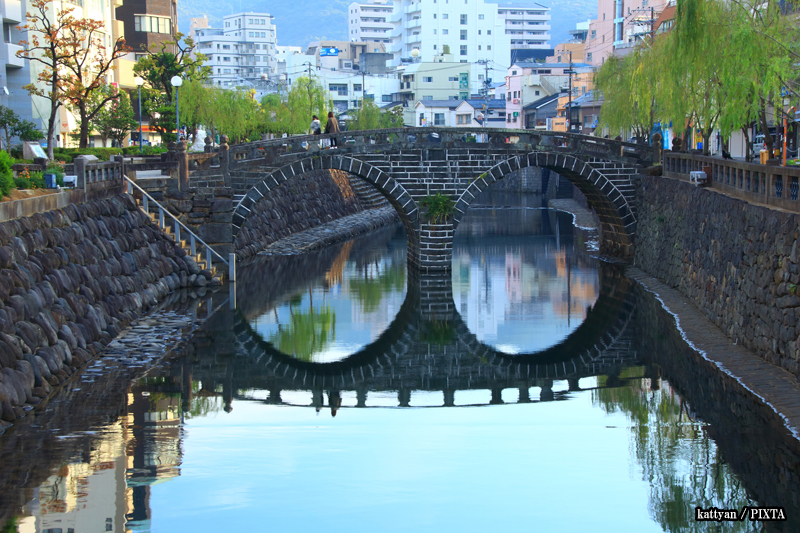
Photo for illustrative purposes
Nagasaki (via West Kyushu Shinkansen)
Nagasaki has a distinct flavor, shaped by centuries of Dutch, Portuguese, and Chinese influence. Here, visit the moving Nagasaki Peace Park and Atomic Bomb Museum, then stroll through Dejima, once the only place where foreigners could trade with Japan during its isolation period. The city’s sloping streets and harbor views are unforgettable.
Takeo-Onsen
A smaller but charming stop, Takeo-Onsen is known for its centuries-old hot springs that are believed to have healing properties. This town blends history and modern charm, with highlights like the beautiful red-lacquered Romon Gate, the entrance to the main bathhouse, and the Takeo City Library, a striking modern building set in nature, often praised for its peaceful atmosphere and stylish design. Nearby, you can also visit the Mifuneyama Rakuen, a large traditional garden especially stunning during cherry blossom and autumn seasons. Thus, it’s a great place to slow down and soak in Kyushu’s relaxed pace.
| Station | Uniqueness |
|---|---|
| Hakata (Fukuoka) | Foodie heaven (ramen, mentaiko), shopping, and modern vibes |
| Kumamoto | Home of Kumamoto Castle, samurai history, and gardens |
| Kagoshima-Chūō | Gateway to active volcano Sakurajima, hot springs, and southern charm |
| Nagasaki | Deep history, Dutch/Portuguese influences, Peace Park |
| Takeo-Onsen | Hot spring town with a stunning library and nature walks |
Suggested 2-4 day itineraries
Now that you know where to go, let’s plan how to fit these stops into your trip. Here’s the best itinerary for traveling Kyushu by Shinkansen, whether you have two, three, or four days.
2-day itinerary: quick highlights
- Day 1:
Start in Hakata and explore Fukuoka’s shopping, temples, and local eats. In the afternoon, hop on the Shinkansen to Kumamoto (about 30 min). Visit Kumamoto Castle, wander through Suizenji Garden, and maybe try some local horse sashimi — a Kumamoto specialty. - Day 2:
Head to Kagoshima-Chūō in the morning (about 1 hour). Take the ferry to Sakurajima, enjoy the steaming hot springs, and explore Sengan-en, a beautiful samurai garden. End your day with a relaxing Shinkansen ride back to Hakata or stay overnight in Kagoshima.
3-day itinerary: Add depth
- Day 1:
Spend your morning exploring Hakata and Fukuoka Tower. By afternoon, ride to Kumamoto, enjoy the castle and gardens, and overnight in Kumamoto. - Day 2:
Continue south to Kagoshima-Chūō. Take your time enjoying the city, and maybe visit Shiroyama Observatory for a panoramic view of the volcano and bay. - Day 3:
On your way back, take the West Kyushu Shinkansen to Nagasaki. Visit the Peace Park and Glover Garden, and walk through the charming Chinatown. In the end, return to Hakata in the evening.
4-day itinerary: full experience
- Day 1:
Explore Fukuoka: Canal City, Ohori Park, and the bustling Tenjin district. - Day 2:
Travel to Kumamoto and spend a relaxed day at the castle and Suizenji Garden. Stay overnight in Kumamoto. - Day 3:
Ride to Kagoshima-Chūō, enjoy a half-day on Sakurajima, and relax in a seaside onsen. Stay overnight in Kagoshima. - Day 4:
Lastly, head to Nagasaki via Takeo-Onsen. Stop for a quick soak at Takeo-Onsen, then continue to Nagasaki for the Peace Park, Dejima, and a stroll along the waterfront. Return to Hakata by evening.
With these plans, you’ll easily cover must-visit Kyushu destinations accessible by train while soaking in history, nature, and local culture.
Your guide to the JR Kyushu Pass
Before you hop on your first Shinkansen, it’s smart to know how you can save money and travel smarter across Kyushu. It’s by JR Kyushu Rail Pass!
This pass is made especially for foreign travelers and has three types that offer unlimited rides on JR trains, including the Shinkansen (except for the fastest Mizuho and Tsubame services), for a set number of days. It’s not just a money-saver; it’s a freedom pass that lets you hop on and off trains without worrying about buying separate tickets.
So, before you go, take a few minutes to think about where you want to go and pick the pass that fits. By picking the right JR Kyushu Rail Pass, you unlock the best itinerary for traveling Kyushu by Shinkansen without breaking the bank.
Let’s break down the three main types of this pass to help you choose the best fit for your adventure.
All Kyushu Pass
- What it Covers: The entire Kyushu region, from bustling cities to peaceful hot spring towns
- Best For: Travelers planning a big loop around Kyushu or covering long distances
- Validity: Three or five consecutive days
- Why Choose It: Perfect if you’re interested in the lively urban culture of Fukuoka, the historic charm of Nagasaki, or the soothing onsen of Beppu and Yufuin. It’s a great choice if your itinerary stays north of Kumamoto.
Northern Kyushu Pass
- What it Covers: Fukuoka, Saga, Nagasaki, Kumamoto, Oita, Beppu, and Yufuin — essentially the top half of Kyushu
- Best For: Travelers who want to explore vibrant cities and famous hot springs without going too far south
- Validity: Three or five consecutive days
- Why Choose It: Perfect if you’re interested in the lively urban culture of Fukuoka, the historic charm of Nagasaki, or the soothing onsen of Beppu and Yufuin. It’s a great choice if your itinerary stays north of Kumamoto.
Southern Kyushu Pass
- What it Covers: Kumamoto, Kagoshima, and Miyazaki — focusing on the southern part of the island
- Best For: Travelers who want to immerse themselves in southern Kyushu’s natural wonders and unique culture
- Validity: Three consecutive days
- Why Choose It: This pass is your ticket to explore volcanic landscapes like Mount Aso, visit the samurai town of Chiran, soak in the outdoor baths of Ibusuki, or admire the subtropical beauty of Miyazaki.
Note: These passes are available only to foreign tourists, so make sure to bring your passport when picking them up.
Why the JR Kyushu Rail Pass is a game-changer
JR Kyushu Rail Pass is a game changer because it is:
- Cost-effective: A single round trip between major cities can already cost close to the price of a pass. So, if you plan even just two intercity trips, you’re saving money.
- Flexible: You don’t need to lock in every detail of your plan ahead of time. Just hop on and go.
- Stress-free: No more worrying about buying individual tickets or figuring out fare charts. Flash your pass, and you’re on your way!
Useful tips for riding the Shinkansen in Kyushu
You have chosen the right pass and think you’re ready to hop?! Well, wait. Before you hop aboard, keep notes of some useful tips for riding the Shinkansen in Kyushu. These tips will save you time, money, and stress.
- Reserve seats early, especially on weekends or during holidays.
- Always keep your pass handy at station gates.
- Check the timetables using the JR Kyushu app or Hyperdia.
- Avoid peak travel dates (like Golden Week or Obon) if you want quieter trains.
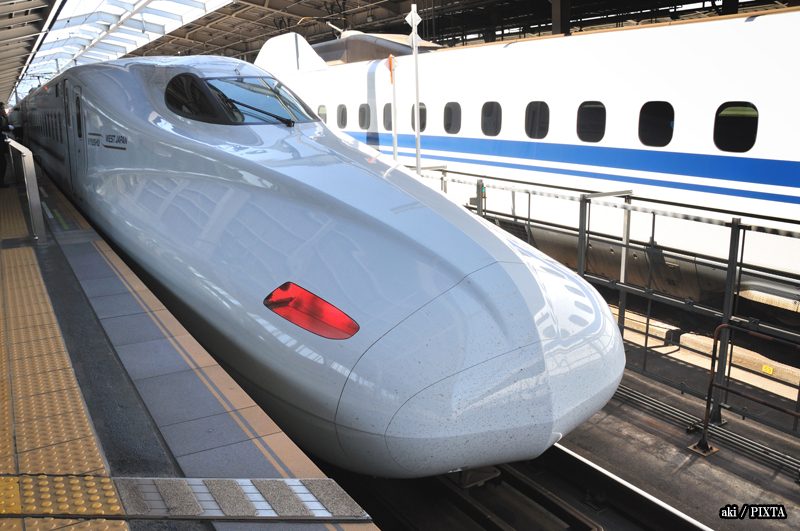
Photo for illustrative purposes
Why train travel wins in Kyushu
You might be wondering: why choose the Shinkansen over renting a car or booking a flight between cities? Well, traveling by Shinkansen in Kyushu isn’t just about getting from point A to point B; it’s about making the journey itself part of the experience. Below are the reasons why the Shinkansen comes out on top every time.
Speed and efficiency
With the Shinkansen, you skip the usual travel headaches, like long airport security lines, baggage check-ins, and transfers from airports to city centers. Moreover, compared to driving, you won’t have to worry about navigating highways, tolls, or finding parking. The Shinkansen gets you from city to city in record time. To illustrate, it will take you from Fukuoka to Kumamoto in just 30 minutes or all the way to Kagoshima-Chūō in about an hour and fifiteen minutes. It’s fast, simple, and stress-free.
Comfort
One of the best parts of riding the Shinkansen is how comfortable it is. The seats are spacious with plenty of legroom (even in regular cars). In addition, the ride is smooth and quiet, and there’s enough space for your luggage. You can walk around or just lean back and enjoy the view. For travelers used to cramped flights or long bus rides, the Shinkansen feels like a breath of fresh air.
Scenic views
The Shinkansen isn’t just a way to get around; it’s a front-row seat to some of Kyushu’s most beautiful scenery. Watch as rice paddies stretch into the distance, mountains peek out behind small towns, and sometimes even catch glimpses of the sparkling sea. Traveling by train gives you a moving landscape and turns even the transit time into a sightseeing moment.
Eco-friendly travel
If you care about traveling responsibly, the Shinkansen is one of the greenest ways to explore Kyushu. Trains have a much smaller carbon footprint compared to airplanes or cars, which makes them a sustainable choice. So, you can feel good knowing you’re seeing the island’s beauty while helping to protect it.
City-center access
Another huge plus is that Shinkansen stations drop you right in the middle of the action. No need to budget extra time for airport transfers or figure out how to get from a highway exit into the city. No matter if you arrive in Fukuoka, Kumamoto, or Kagoshima-Chūō, you’re already where you need to be.
Final thoughts
To sum up, the Shinkansen isn’t just the fastest way to travel around Kyushu; it’s the most enjoyable, comfortable, and memorable way to discover the island. With every ride, you don’t just save time but also add an experience to your journey.
Since you’ve got the route, the stops, the tips, and the itinerary — what’s next? Don’t forget to read “A Guide to Kyushu’s Famous Street Food and Local Flavors,” because your taste buds won’t forgive you if you skip it. After all, Kyushu isn’t just a destination; it’s an experience. So, don’t just visit Kyushu — taste it, feel it, live it!
At Umami bites, we offer expertly crafted travel guides designed especially for international visitors. With routes, destinations, itineraries, and train tips in your pocket, Umami bites helps you experience Japan like a local, not just a tourist. Visit our website to start planning your journey the smart (and tasty) way.
